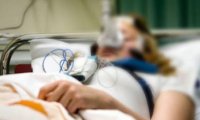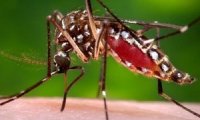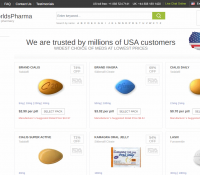 Phenylketonuria is a serious disease, the detection and treatment of which became possible only with a noticeable progress of medicine in the XX century. It is a congenital metabolic disorder that leads to the defeat of the nervous system, mental retardation. However, today, many types of disease can be overcome.
Phenylketonuria is a serious disease, the detection and treatment of which became possible only with a noticeable progress of medicine in the XX century. It is a congenital metabolic disorder that leads to the defeat of the nervous system, mental retardation. However, today, many types of disease can be overcome.
Causes and types of phenylketonuria.
In the middle of the XX century it was found that it is a genetic disease. It is either transmitted from parents to children, or there is a spontaneous mutation of the genetic apparatus. In the latter case, it is customary to talk about the variant form of the disease. As a rule, it is more severe and is often called "malignant" - because of the speed of the development of violations.
How is it inherited?
A healthy person can carry a mutated gene. In order for the disease to manifest itself, it is necessary that both parents carry this gene. That is why it is more often manifested in populations where closely related marriages are taken - there is a higher probability of "meeting" this recessive (undeveloped in the form of a disease) trait in the mother and father. In the classical scheme of possible variants of inheritance in the autosomal recessive type, it is shown that in two mutation carriers, children can be:
1. Sick - probability 25%;
2. Healthy, but to be carriers - a probability of 50%;
3. Healthy and not to be carriers - 25% probability;
Looking at such a scheme, people often imagine that of the four descendants born one will necessarily be sick, and three are healthy. In this case only one will not bear the mutated gene. But this is not so - it is only about probabilities. That is, in practice, there can be as many sick or healthy children in such a family.
The mutation of a certain gene leads to the fact that the enzyme that cleaves phenylalanine practically does not work in the body. As a result, this substance accumulates in all media and tissues. "Spare" pathways of cleavage of phenylalanine result in the accumulation of toxic ketones.
In order to have an idea of the gravity of this situation, it is necessary, at least in general terms, to understand what functions the described substances perform in the body.
Phenylalanine is an essential acid. It comes to us with protein (animal and vegetable) food. With a healthy cleavage of phenylalanine, its components become a "building material" for the formation of various hormones, pigments. In addition, in the pathological accumulation of a given substance, it hinders ("competes") the normal exchange of other important compounds, for example, neurotransmitters - serotonin, dopamine. The body gradually poisons itself with phenylalanine and the products of its disintegration, in parallel, the exchange of other essential substances is disrupted.
Children, who are sick with this disease, at birth, usually do not differ from healthy babies. Although there are sad exceptions, disorders of metabolism and development accumulate gradually, within months. Explicit neurological pathologies become noticeable by the end of the first half of life (on average).
Symptoms of phenylketonuria.
One of the first signs that parents can notice is the "mouse" smell or the smell of mold that comes from the urine, the skin of a child. In addition, often observed:
• Regurgitation;
• Disturbances in muscle tone;
• Lack of interest, reactions to external stimuli (voice);
• Convulsions (epileptic seizures develop, approximately, in a quarter of patients with phenylketonuria);
• Skin vulnerability, susceptibility to allergic rashes, dermatitis;
After several months of increasing pathological changes, it becomes obvious that the child lags behind the peers in development. If treatment is not performed, such patients do not survive to adulthood, because the state of their nervous system and other systems and organs is constantly deteriorating.
Treatment of phenylketonuria.
The only way to prevent dangerous changes in the body is to sharply limit the intake of phenylalanine from the outside. In other words, when diagnosing phenylketonuria, the patient should be immediately transferred to a protein-free diet.
Such patients should not eat food of animal origin - meat, milk, eggs. Also, many herbal products contain protein, for example, legumes, nuts. Phenylalanine is contained in many synthetic products - in the form of aspartame. Any sources of this substance are strictly limited. The diet of the patient includes juices, fruits and vegetables, rice, potatoes, honey, jams and jams, bread and pasta, vegetable oil. For the most part, these products should be therapeutic - cooked with low protein content. To fill the lack of other amino acids, patients are prescribed special mixtures rich in carnitine and other substances that a person normally gets from food. Also, vitamins, especially, the B group, are prescribed separately. However, with some atypical forms of phenylketonuria, such a diet does not bring appreciable relief.
In addition, the patient must receive medicines that will support the basic and suffering functions of the body. For example, hepatoprotectors and enzyme preparations, anticonvulsants, and medications that support the function of the nervous system and so on. A child with phenylketonuria should be surrounded by special attention. He (she) needs physical exercises, massages, procedures that will help to harmoniously develop. During the training it is important to understand the characteristics of such children and apply the appropriate methods of psychological support, correctional pedagogy. Parents should clearly understand that the further life of their baby directly depends on what situation they will be able to create around him, how carefully they will observe a complex diet, how timely they can track and correct any health disorders. Obviously, if you do not treat this metabolic defect - a person will not live long.
If the diet can stop the accumulation of phenylalanine children can grow and develop normally. Of course, in this situation, the individual history of each patient is more important than what pathologies accompany this disease and so on. It is believed that during adolescence (puberty), patients can gradually relax the severity of the diet. The organism adapts to a certain extent to an excess of phenylalanine. But, as a rule, patients follow their limitations on protein products for life, allowing themselves only a greater variety in cereal products.
If phenylketonuria affected a woman who wants to become a mother - she should limit herself to the maximum in protein intake and carefully follow all the recommendations of doctors. In this case, there is a hope to endure and give birth to a healthy baby. Some forms of this disease are not amenable to treatment.




